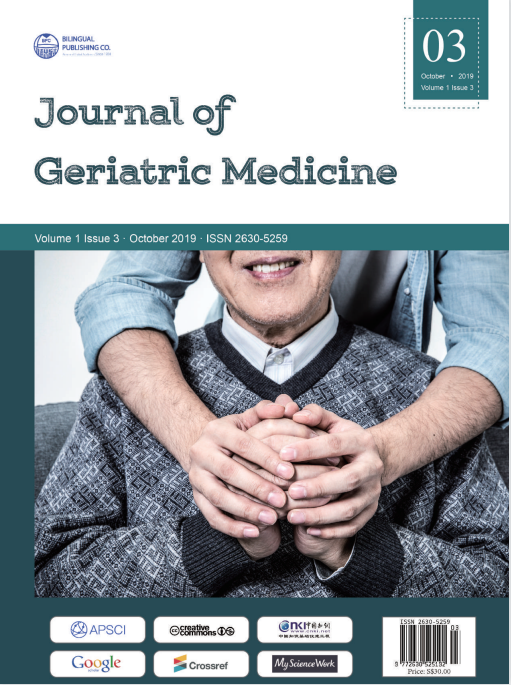 Correction & Withdrawal Policies
Correction & Withdrawal Policies
Aging and geriatric dentistry
DOI:
https://doi.org/10.30564/jgm.v1i3.2091Abstract
Five theories shed lights on the potential mechanisms of aging: somatic mutations, telomere loss, mitochondrial defects, accumulation of altered proteins inside proteasomes. Altogether, they are forming a network. The existence of a program of aging is not yet identified, but overlaps with a program to die. On the other hand, organisms are programmed for survival which ultimately fails. This failure results in aging. Notabily, age-related changes are alterations in the rate of transcription of specific genes, changes in protein synthesis and turnover, and numerus post-translational protein modifications, including glycation and oxidation. In response to trauma and caries, elderly patients are more susceptible to root caries due to inadequate oral hygiene, irregular dental examinations and cleaning, salivary gland dysfunctions, insufficient use of fluoride, and removable partial dentures, which trap plaque around the teeth, favoring the formation of caries. Root surface caries become more common in the elderly, and oral lesions may be due to periodontitis, local trauma, exposure of root surfaces, related gingival recession, formation of periodontal pockets, associated to insufficient removal of food/plaque between the teeth. Epithelial thinning, decreased cellular proliferation, and reduction of submucosal extracellular matrix, leads to plications and foldings of the mucosal surface, and subsequently to bacterial colonization. Geriatric dentistry (or gerodontology) is an increasing field of dentistry, mostly associated with the growing percentage of the group of patients over 80+ years.
Keywords:
Aging, Telomeres, Proteasomes, Gene transcription, Caries, Periodontal diseases, Geriatric dentistryReferences
[1] Kirkwood TBL. Understanding the odd science of aging. Cell. 2006, 120: 437-447.
[2] Aubert G, Lansdorp PM. Telomeres and aging. Physiol rev.2008, 88: 557-579.
[3] Rajawat YS, Hilioti Z, Bossis I. Aging: central role for autophagy and the lysosomal degradative system. Aging Research Reviews 2009, 8: 199-213.
[4] Campisi J. Aging, cellular senescence, and cancer.Annual Rev Physiol., 2013, 75: 685-705.
[5] Harman D The aging process. Proc. Natl. Acad. Sci. USA. 1981, 78(11): 7124-7128.
[6] Weinert BT, Timiras PS. Invited review: Theories of aging. J Appl Physiol., 2003, 95: 1706-1716.
[7] Troen BR. The biology of aging. Mt Sinai J Medicine, 2003, 70(1): 1-22.
[8] Jin K. Modern biological theories of aging Aging and disease. 2010, 1(2): 72-74.
[9] Guiglia R, Musciotto A, Compilato D, Procaccini M, Lo Russo L, Ciacarella D et al. Aging and oral health : effects in hard and soft tissues. Current Pharmaceutical Desing, 2010, 16: 619-630.
[10] Bhadbdade S. Aging & periodontium Internat. J. Dentistry Oral Science, 2015, 2(6): 79-83.




 Michel Goldberg
Michel Goldberg





